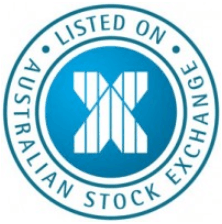
Once again it feels like the calm before the storm in the global capital markets; while the US closure on Monday has a lot to do with it, the intra-day ranges in many assets seem worryingly low.
Perhaps there’s an element of traders who are simply staying put, waiting to see if the S&P 500 can break into blue sky territory again, and then the momentum-focused traders will jump back on board. Certainly it would be nice to see better US data; while many will attribute the slowdown to weather patterns, there are a number of issues that simply can’t be blamed on the weather. So until clarity is restored here (which may take some time to materialise), the market won’t look to significantly unwind treasury longs, especially in the short-end, and go overweight the USD again.
USD bulls (including myself) would have been hoping the market would be pricing in much more than 56 basis points of tightening from the Fed by the end of 2015, but given the data flow you can understand the current pricing. Whether the market is genuinely of the view that Janet Yellen will not continue with its tapering exercise is unclear, but if you look at EUR/USD, the pair continues to grind higher and is pushing towards the 1.3800 level, which has been a strong trigger for shorts to be initiated. The moves here seem at odds with GBP/USD and AUD/USD, which have both found the upside tough going of late in the last 24 hours. USD/JPY looks fairly vulnerable as well, especially as the world have woken up to the fact that yesterday’s measures from the BoJ to extend and increase the provision of funds to support bank lending and reinforce the provision for economic growth didn’t amount to an increase in the monetary base and are therefore not easing.
AUD/USD at risk of a move to 89 cents
AUD/USD is looking fairly vulnerable again and there are a number of technical indicators that suggest a move to the low 89s is on the cards. Today’s Australia Q4 wage growth grew at an annualised rate of 2.6%, which was modestly above expectations, however the AUD fell on this. The prospect of benign wage growth, elevated inflation, below-trend growth and a high currency should keep the market guessing on the future of monetary policy in Australia, and certainly justifies a neutral stance, for now.
The ASX 200 has rallied modestly today, which is positive to see, especially as we have seen follow-through buying on the open. Earnings have generally been strong today, notably from Seek who on any metric look like a fantastic business. Seek’s earnings today are strong and justify a stock that is at all-time highs and there are not many businesses that have such compelling levels of return on capital, free cash flow per share, or expected sales growth and certainly not altogether. Fortescue Metal’s reported numbers that were in-line haven’t really provided a major incentive for the bulls to push the stock materially higher; in fact, price action looks fairly shaky today, trading back into the sideways range it’s been in since November. My preference (if I had to be long an iron ore name, which I’m not) is BC iron, which also has a return on capital of 22%, free cash flow per share of 92% and 61% projected sales growth. Again like FMG, indecision is seen on the daily chart, and while the name is at an all-time high, the stock has stopped short of a bearish outside day.
Increased talk around iron ore
One of the most talked-about concerns today on the floor has been around the iron ore price and the elevated levels of inventories at Chinese ports. The bears will point to the fact that inventories at Chinese ports has exceeded 100 million tons for the first time since July 2012 and is at levels thematic of sell-offs in iron ore over the last few years. The bulls will counter this by saying the increased tonnage from re-stocking comes ahead of strong seasonal demand, with iron ore traders feeling the price is likely to increase (hence the build-up). We need to remember that the official manufacturing PMI series in China tends to be strongest in March and April, so this could feed into their call. This would explain the view that many are getting cheap credit from abroad, importing the iron ore and then selling on the spot market for a tidy profit, which would in turn explain the levels of inventories.
The authorities in China must be cognisant of this issue and it will be interesting to see if anything happens here, however the elevated levels of inventories has been noted and puts iron ore stocks and the AUD firmly in the spotlight. The 60-day correlation between the iron ore price and the trade-weighted AUD is actually negative, however my view is this should pick up again and get to around the 40% level we saw back in 2011 if iron ore starts to slide again.
With limited moves in Asia, S&P and FTSE futures have seen no real action today. Clients have generally stayed away from our European out-of-hours markets given the lack of any real volatility and have been looking more intently at other asset classes such as EUR/USD and certainly Australian equities. Still a weaker open in Europe is expected, with traders keeping an eye on UK employment data in the upcoming session, while the Fed and BoE also release minutes from the recent central bank meetings. We also get US housing starts and building permits, while Dennis Lockhart and James Bullard speak from the Fed.
Chris Weston is Chief Market Strategist at IG Markets